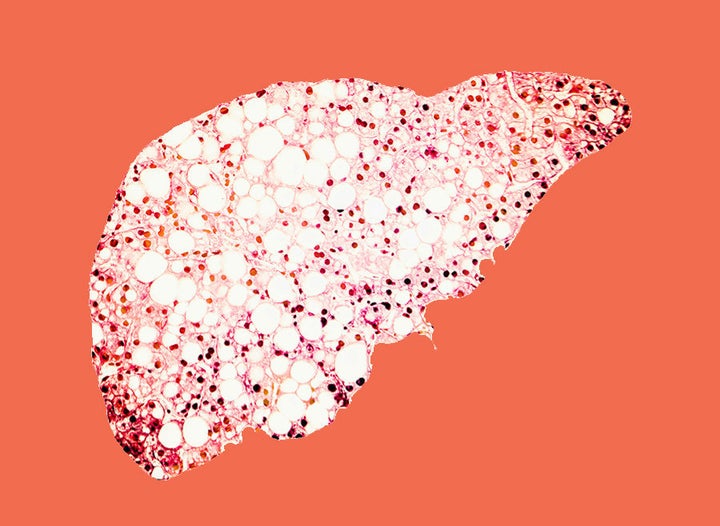Young adults in the UK are presenting with alarmingly high levels of non-alcoholic fatty liver disease (NAFLD), a new study has revealed.
One in five young adults in their early twenties has features of NAFLD, the name given to a range of conditions caused by a build-up of fat in the liver, and one in 40 have already developed fibrosis, the formation of scar tissue in the liver, according to the study.
While fibrosis itself causes no symptoms, if it progresses it can result in cirrhosis of the liver where scar tissue prevents the organ from working properly. This can eventually lead to liver failure, which can be fatal.
While NAFLD is usually seen in people who are overweight or obese and is most prevalent among men aged 40-65 years old, the latest research suggests it’s becoming an issue far earlier in life – and researchers have warned of an impending public health crisis as a result.

The Children of the 90s study, presented at The International Liver Congress 2019 in Vienna, Austria, suggests that greater awareness of NAFLD is needed among young adults if a public health crisis is to be avoided.
It’s important to point out that this form of liver disease isn’t related to alcohol consumption. However it does have a clear association with obesity and diabetes. So diet plays a key part.
NAFLD is the most common form of chronic liver disease among both adults and children, with an estimated global prevalence of 20-30%.
Dr Kushala Abeysekera, from the University of Bristol, which led the study, said it’s the largest to date to analyse fibrosis and steatosis in young adults with suspected NAFLD.
His team looked at data from more than 4,000 young adults who had previously been assessed for NAFLD as teenagers using ultrasound criteria. During their younger years, the prevalence of NAFLD was 2.5%.
On revisiting the same group as young adults (who had an average age of 24), researchers discovered that a total of 680 out of 3,277 individuals (20.8%) were found to have steatosis, which is indicative of NAFLD – and just under half of these were classified as severe.
“We were concerned to find that, at only 24 years of age, one in five had steatosis and one in 40 had evidence of fibrosis,” said Dr Abeysekera. “The results of our study suggest greater public health awareness of NAFLD is needed in young adults in the UK.”
In response to the study, Professor Philip Newsome, of The European Association for the Study of the Liver (EASL), warned that swift changes in public policy are needed “if we are to defuse the ticking time-bomb of obesity and NAFLD”.
Pam Healy, chief executive of the British Liver Trust, told HuffPost UK: “These statistics are alarming but sadly unsurprising given what we are hearing about on the ground.
“Across the UK, we are facing a liver disease crisis and the age of people being diagnosed with non-alcoholic fatty liver disease (NAFLD) is getting younger and younger.”
She blamed the “emerging epidemic of childhood obesity” and warned that NAFLD can lead to liver failure, liver cancer and transplants, which would place even more burden on the NHS.
Healy called for greater awareness of the risk factors of fatty liver disease is crucial, including the fact that 90% of liver disease is reversible if caught in time, adding: “To reduce your risk of fatty liver disease, it is important to maintain a healthy weight through a balanced diet and regular exercise.”